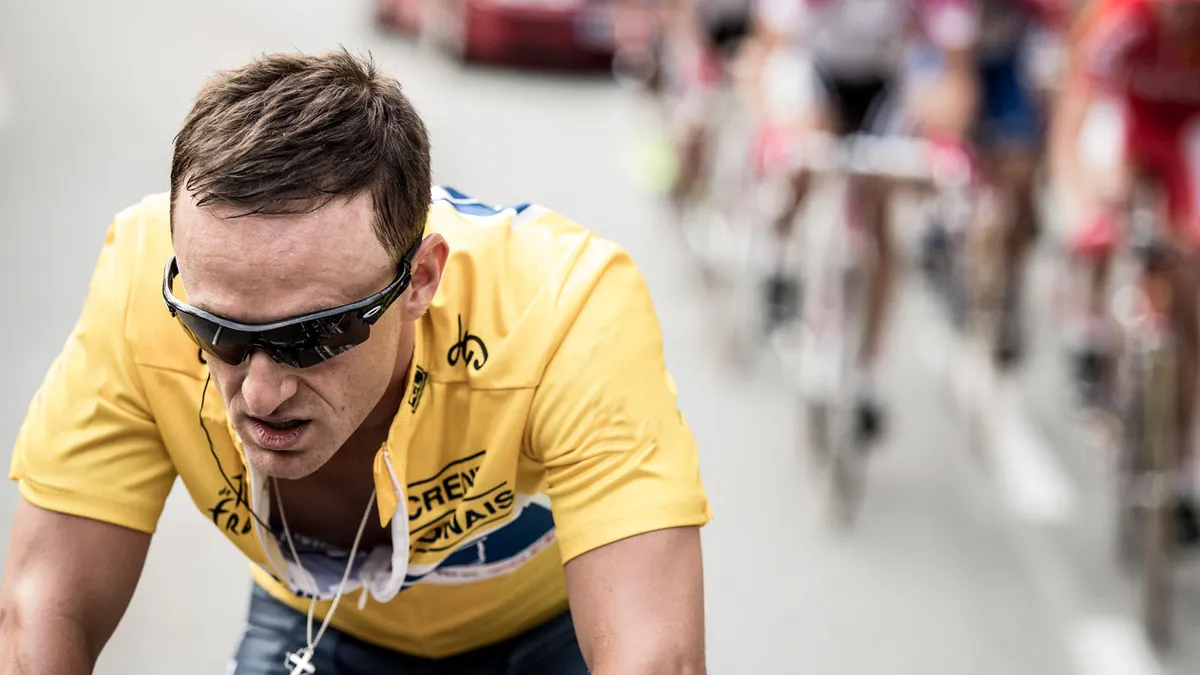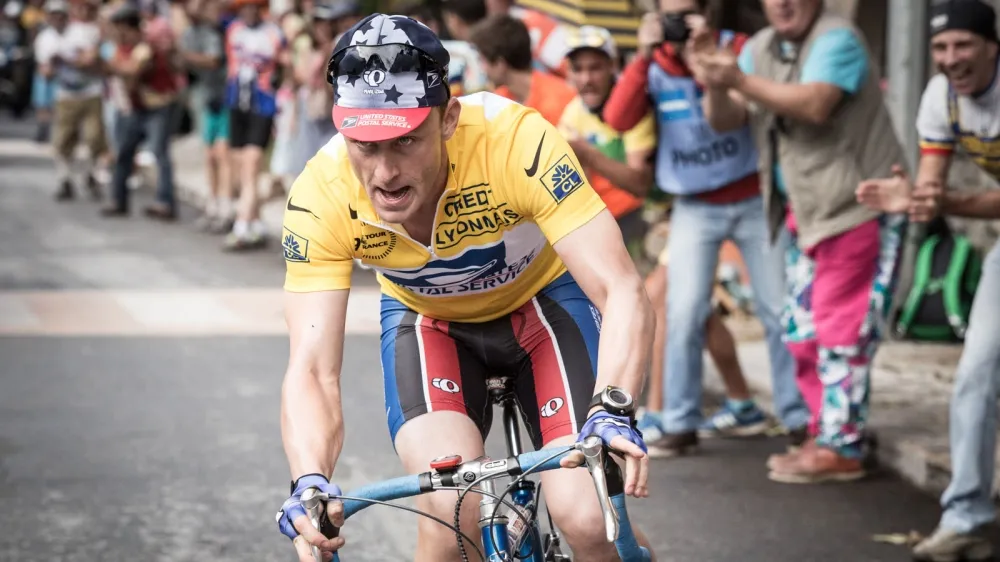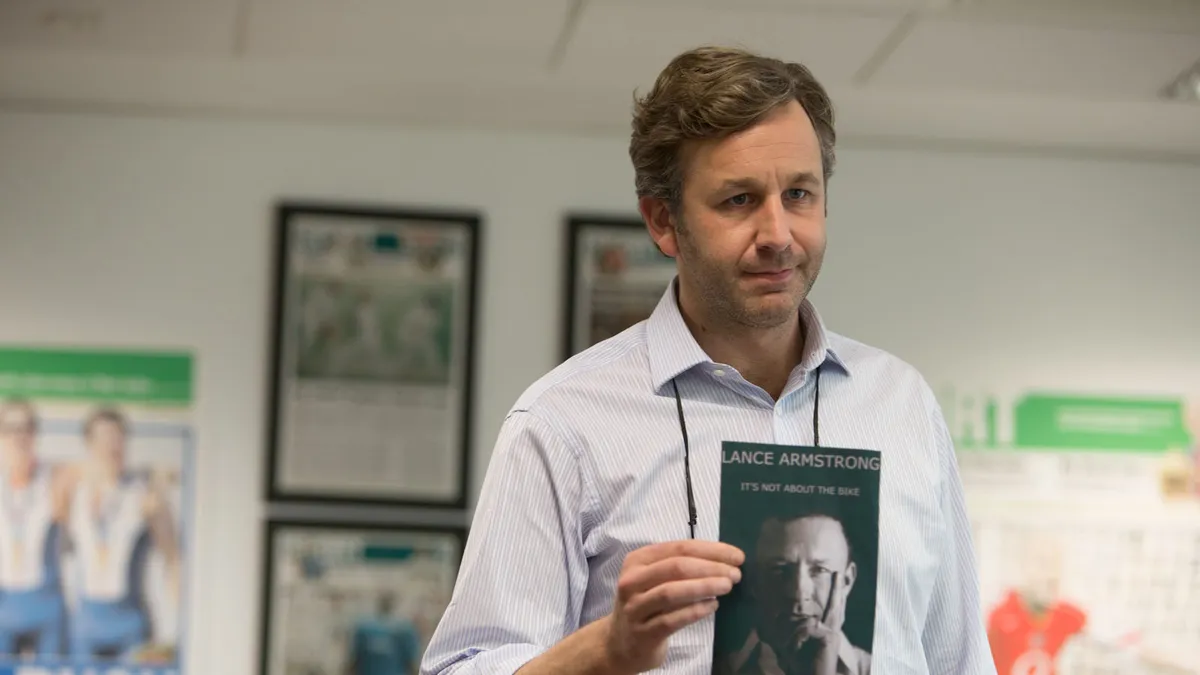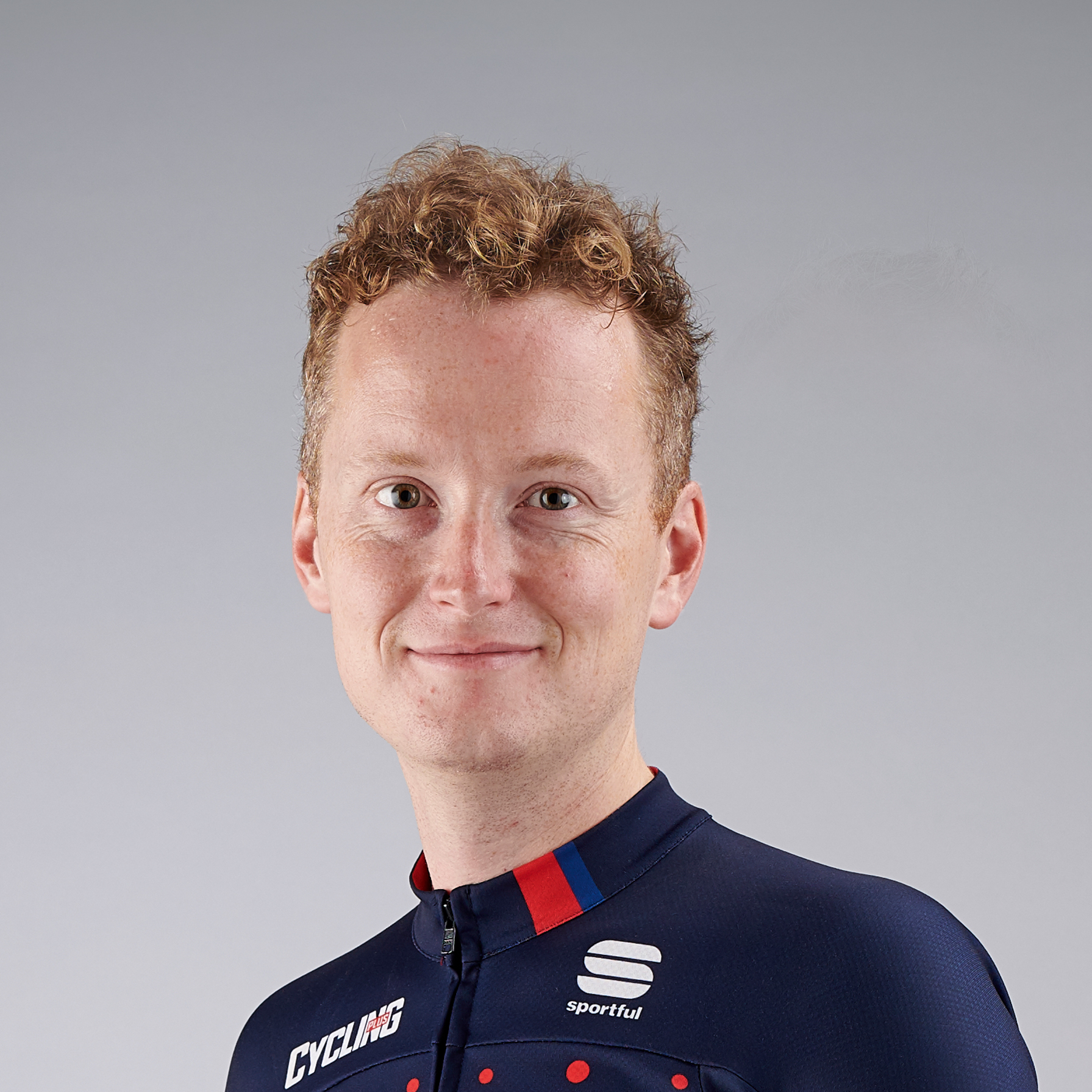You’ve read the news articles, watched the TV reports, seen the documentaries and perhaps even trawled though the affidavits. So, it was only a matter of time before you got to see Lance Armstrong’s story play out as Hollywood drama.
Twice Oscar-nominated Stephen Frears’ film is the first, but surely not the last, past the post in what was a rise and fall of such monumental proportions it was always destined for the multiplex.
The Program was inspired by, rather than adapted from, David Walsh’s book Seven Deadly Sins, the Sunday Times journalist’s 2012 book that served as a greatest hits – and something of a vindication – of his turbulent 13-year quest to expose Lance Armstrong as a drugs cheat.
Related: Lance Armstrong movie bikes go on sale
To pad out the narrative, writer John Hodge – perhaps an ideal choice, given that he got his chops telling stories of debauchery with his screenplay for Trainspotting – also pored over the US Anti-Doping Agency’s (USADA) ‘Reasoned Decision’, its investigation into Armstrong and the goings on at his US Postal team. Production was a whirlwind; filming was finished less than a year after Walsh started work on his book.
Racing scenes that reek of realness
The opening scene is promising; Armstrong, climbing alone and silently but for the sound of his heavy breathing, at the head of a stage of the Tour de France with the camera slowly closing in behind him. It’s a relief to see cycling on the big screen that feels real. We’re then sent back to 1994, via Walsh’s (Chris O’Dowd) first encounter with Armstrong at his debut Tour a year earlier, to La Flèche Wallonne, the Belgium classic where the Gewiss-Ballan team cleaned up with a 1-2-3. Its doctor was the now-disgraced Italian Michele Ferrari (Guillaume Canet), who’d become so intertwined in the US Postal scandal.

Taking on David Millar as a consultant was a smart move – the racing scenes are visceral and involving
Armstrong, still apparently clean, is hammered in defeat and, spurred on by a warning by future collaborator Johan Bruyneel that he won’t get anywhere without dope, encourages his Motorola teammates to do what much of the peloton is seemingly doing.
The racing scenes here, splicing real and dramatised footage are, like those in the rest of the film, the best things about it and do a fine job in capturing both the era and the world of bike racing. Currently working on his own documentary about the inner workings of the pro racing world, multiple TdF stage winner, David Millar’s role as ‘cycling consultant’ has paid off.
Related: The Armstrong Lie review
The story rattles along, touching the well-known bases: the cancer diagnosis, the hospital scene with teammate Frankie Andreu (Edward Hogg) and his wife Betsy (Elaine Cassidy), where he allegedly admitted to performance enhancing drug use, the Festina Affair… it might prove a challenge for those less familiar to the story than this writer to fill in some of the occasional blanks. Walsh’s sudden switch from believer to sceptic doesn’t feel earned, while the importance of characters such as Emma O’Reilly (Laura Donnelly), Armstrong’s former soigneur, doesn’t quite register on screen.
Mixed performances
Every story needs a villain and while Armstrong is hardly portrayed as a Boy Scout – his tirades against O’Reilly, blackballing of Walsh and intimidation of rivals with a simultaneous smile for the cameras reveal his sinister side. He’s such a complex character that Frears wisely adds shades of light, particularly towards the end as his house of cards tumbles.
Guillaume Canet as Ferrari chews up everything in sight with a pantomime menace that plays on how he was portrayed in the written press for years. Dramatised, however, he’s a scarcely believable character. In a lecture scene when he comically debunks ethics of using EPO on a healthy athlete, think Dr Nick from The Simpsons.

Guillaume Canet delivers a scenery-chomping turn as the infamous dope-doctor Michele Ferrari
Jesse Plemons, at least early on, effectively reprises his role from Breaking Bad. For those familiar with the series, his put-upon, downtrodden Floyd Landis led astray by an egotist isn’t a world away from Todd’s relationship with Walter White. Like Foster, he’s believable as a bike racer – no mean feat – and their time at a Garmin-Sharp boot camp has clearly paid off.
Chris O’Dowd is good as Walsh, if at 6ft 3in somewhat more statuesque than the man himself, but plays a distant second fiddle to Foster, which is fair, given Armstrong’s substantial role in his own downfall. It’s very much Foster’s film and he gives great Lance, getting an immediate head start by looking like him (it’s largely in the eyes) but also nails the tics and speech cadences. If this review feels more weighted towards Armstrong than Walsh, then that’s testament to the way Foster holds the attention.
A story in need of a fresh angle?
With its writer and director, The Program has terrific credentials. The biopic is a tough trick to pull off, particularly films of this ilk that straddle decades. Making sense and giving sufficient depth to a dense plot and myriad characters in a couple of hours is a challenge and one many have struggled with, and this is no exception. So much ground is covered that not everything gets the attention it deserves, such as much of the inner workings of the US Postal team. Armstrong’s downfall after almost two decades of ascension is so swift that it registers as little more than an epilogue.
It’s faithful to its source material, perhaps too faithful at times for those well versed in the story. Hearing Armstrong telling O’Reilly that she “knows enough to bring me down” could be part of an Armstrong catchphrase bingo game such is its familiarity, and can take you out of the drama. So too might the bulky arms on Alberto Contador and the cobbles in La Flèche Wallonne.
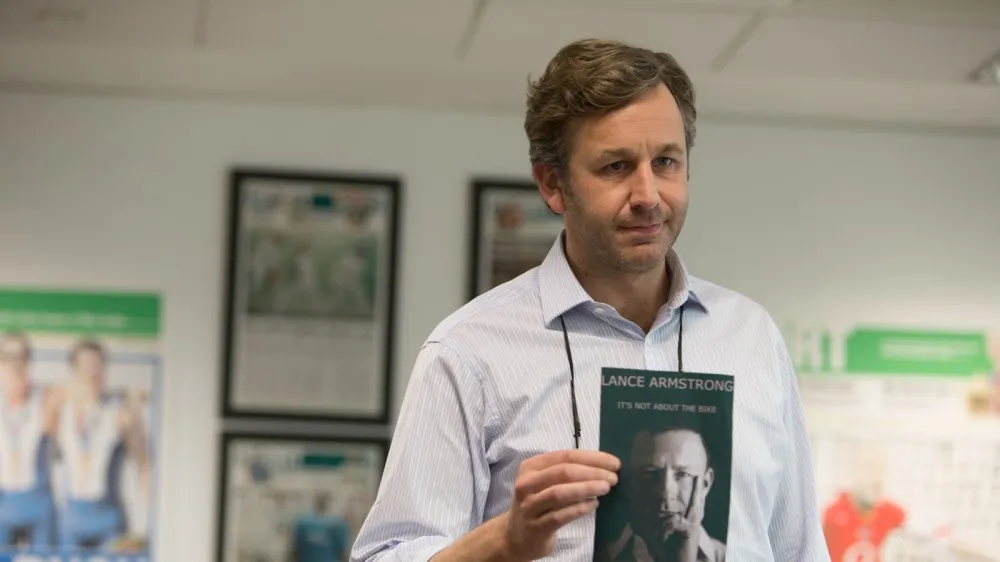
Chris O’Dowd as journo David Walsh – The Program is described as 'inspired by' rather than adapted from his book, Seven Deadly Sins
Frears says that he was attracted to this story – and professional cycling – after reading a review of Tyler Hamilton’s gripping book The Secret Race and perhaps there’s a grittier, deeper film to be made from that. The angle of journalist pursuing his story against the odds is more typical Hollywood fare and you can see why it was chosen – you just wish it were a little deeper and nuanced.
Perhaps The Program’s closest relation is Rush, the Formula One drama about the rivalry between James Hunt and Niki Lauda, a similarly polished, well-played primer that will interest those new to the story, with memorable action scenes, if adding little beyond curiosity for hardcore fans.
Behind the scenes…
Lance has been scathing
Well, he’s only seen the trailer so far but hasn’t liked what he’s seen. “I’m not sure what Stephen Frears was thinking?” he told The Cycling Podcast during his charity ride with former footballer Geoff Thomas in France this July. “From winning an Academy Award to… I think anybody that loves cycling and saw that [the trailer] goes, ‘Really?’ Just in the trailer you have a few things that stick out that just aren’t true. You’ve got [Floyd] Landis standing there saying ‘I didn’t sign up for this’. It’s just not true.” Neither is it true that Frears has won an Academy Award, but then Armstrong’s never been shy in letting the truth get in the way of a good sound bite.
Former pro and multiple Tour de France stage winner, David Millar was the film’s ‘cycling consultant’
Few of the main players involved in the production had much knowledge of the world of professional cycling, so Millar, then still riding for Garmin-Sharp, was recruited as an advisor. “I had everything to do with cycling and educating Stephen [Frears] on the cycling world; from the bike riding, to the history of the sport, to the characters involved and the real-life people.”
“David has been the cycling conductor,” says Ben Foster, who plays Armstrong. “He was after… the ecstatic experience of what it means to ride for six hours and keep suffering and move through; how does a peloton breathe, how does it migrate. We were very blessed to have his eye on it because it’s sharp.”
Condor Cycles supplied the bikes
The cycling scenes are one of the best aspects of the film, but without nailing the attention to detail cycling fans wouldn’t have bought it. London bike firm Condor Cycles played a role in that, producing 40 replica frames for filming, including Team Telekom’s Giant TCRs and Motorola’s steel Eddy Merckx Caloi bikes. US Postal’s Treks, however, were originals sourced from dealers.
You might recognise some of the extras
Racing needed to look authentic for the film to stand up, so Millar was tasked with finding professional cyclists to be in the shoot. Among some 20 amateurs were a number of professionals, including the retired Andreas Klier, who was involved in Foster’s training, Servais Knaven, a directeur sportif at Team Sky and Yanto Barker, the British rider currently with One Pro Cycling.
Ben Foster came in to the film a total cycling novice
Apart from seeing Armstrong on Oprah Winfrey’s show, Foster knew little about Armstrong’s story, and had to go from a guy who couldn’t clip into pedals to someone who could pass for Big Tex in just six weeks. He and Jesse Plemons (Floyd Landis) entered a training camp just weeks before shooting in 2013 in Boulder, Colorado, headed by Allen Lim, a former trainer of both Armstrong and Landis. The pair also embedded with the Garmin-Sharp team during the USA Pro Challenge.
Look carefully and you might see goose pimples
Because they needed access to professional cyclists for the racing scenes – and because the season doesn’t end until October – location shooting in the Alps had to be done in the middle of October. They had just 10 days to complete it and were fighting against the fast-approaching winter, high up on the towering Col du Galibier – not the place to be at that time of year!
The race footage is smoke and mirrors
Obviously the filmmakers couldn’t recreate the volume of fans on mountains such as Mont Ventoux, so to get round it used a clever mix of dramatised action intercut with archive footage, along with close-up shots. It’s an illusion that has paid off.
